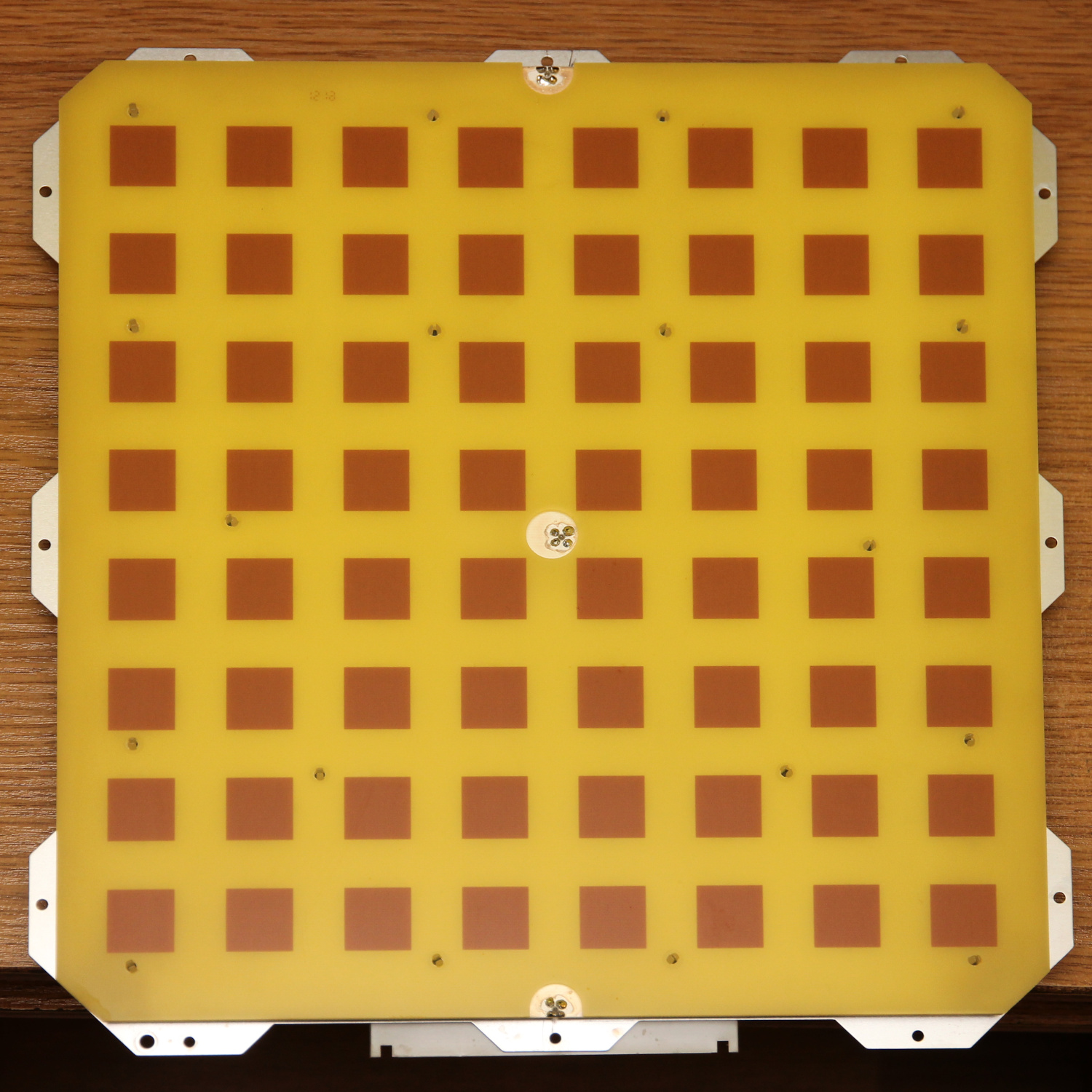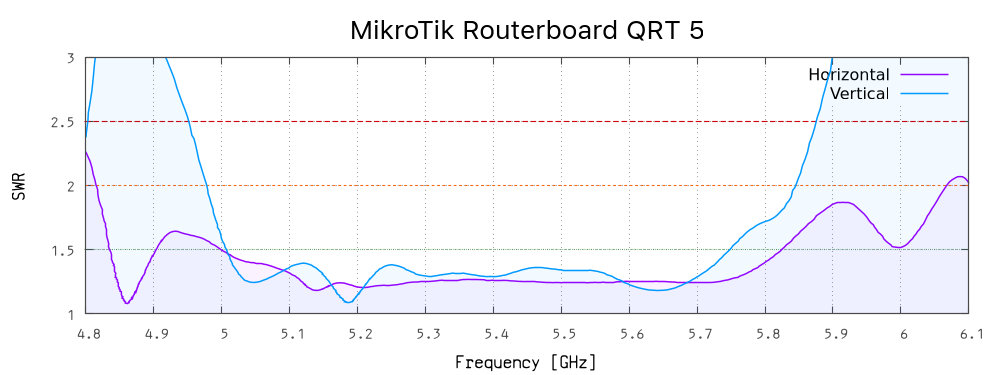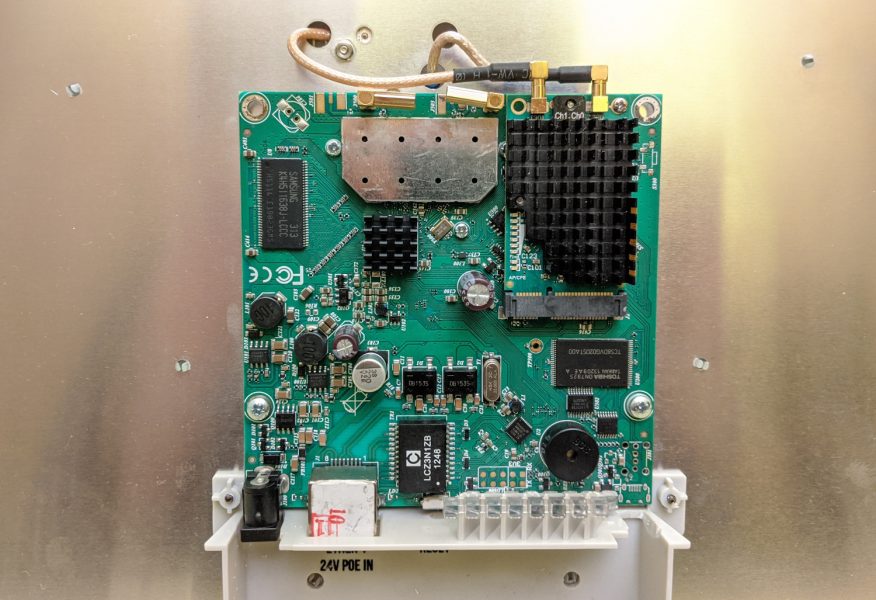MikroTik QRT 5 is a dual-polarization 5 GHz microstrip panel antenna with a gain specified up to 24 dBi and integrated radio at just 31×32×5 cm size and 2 kg weight (1.5 kg without antenna mount).
I bought an used pair in very good condition in November 2016 mostly for mobile Wi-Fi DX-ing. The low thickness is a big advantage, as the antenna can easily fit in a backpack together with laptop and other essential equipment. Unfortunately, the compact size comes at cost of poor radiation pattern. Generally, the microstrip antennas have very strong side lobes.
The plastic case looks quite robust and UV resistant. The microstrip antenna array inside consists of 64 elements (8×8), which result in 10.5° beamwidth (-3 dB). There is also a MikroTik RB911G-5HPnD-QRT board, which features a 2×2 MIMO 802.11an radio (AR9342 SoC) with 30 dBm tx power. The antenna is connected with two short MMCX pigtails.
This time I did not measure the VSWR on my own. Surprisingly, MikroTik provides gain and return loss plots together with antenna radiation patterns in both horizontal and vertical polarization. I acquired these datasets from the PDF file using WebPlotDigitizer application and the following plots are based on them. While the horizontal chain is good over the entire radio tuning range (4.9 – 6.1 GHz), the vertical chain limits the antenna usable range to 5.0 – 5.85 GHz.
No surprises regarding the radiation pattern. The sidelobes are significant, especially the first one which reaches -13 dB. The measurement frequency is unknown, but presumably the center of band (maybe 5500 MHz?).
Unfortunately, the AR9342 radio is unreliable for Wi-Fi DX-ing, as the radio calibration process takes around 100 ms for each channel. During that time, all reported signals level values are underestimated and the sensitivity is considerably worse. The workaround is to use longer channel hopping time (at least 200 ms/freq, preferably more). This problem has been reported to MikroTik support and acknowledged, but with no solution.
Due to that bug, I have replaced the board to RB912UAG-5HPnD with R11e-5HnD radio (based on AR9582 chipset). According to some initial tests, the sensitivity is noticeably better (more networks are detected in comparison to the stock QRT 5 radio in the same conditions) and the channel hopping is now reliable at 100 ms/freq rate. There is one disadvantage though, as the tx power is only 27 dBm. The modification was a bit tricky, as some adaptations were required to fit the QRT 5 case…
- The major problem: the stock MMCX pigtails are too short for a miniPCIe module. I replaced them with longer ones. To keep low profile of the board, I also replaced the MMCX connectors on the R11e-5HnD radio to right angle versions.
- Some LEDs are soldered in different places (power, ethernet). I removed them and soldered new ones.
- The reset button is also soldered in a different place on the board. I moved it next to the Ethernet port.
- The USB socket must be removed. Still, there is a place for microUSB connector on the board if the USB is necessary.
- The white plastic port panel must be also modified for DC input jack (and microUSB).







